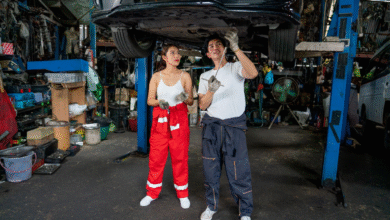Installing a range hood on a vaulted ceiling can be a bit more challenging than on a flat ceiling due to the angle and height variation. However, it’s certainly doable with the right tools and some careful planning. Here’s a step-by-step guide on how to install a range hood on a vaulted ceiling:
Materials You’ll Need:
- Range hood
- Range hood installation kit (typically includes brackets, screws, and ductwork)
- Stud finder
- Drill with drill bits
- Screws and anchors suitable for your ceiling material
- Measuring tape
- Level
- Ductwork and ducting materials
- Vent cap (for exterior)
- Vent pipe or flexible duct
- Vent hose clamps
- Screwdriver
- Safety glasses and gloves
- Electrical wiring tools (if hardwiring)
Step-by-Step Guide:
1. Turn Off Power:
- Ensure that the power to the range hood is turned off at the circuit breaker or fuse box. This is important for electrical safety during the installation.
2. Locate Ceiling Joists:
- Use a stud finder to locate the ceiling joists where you plan to install the range hood. You’ll need to secure the range hood to the joists for stability.
3. Measure and Mark:
- Measure and mark the desired location for the range hood on the vaulted ceiling, making sure it aligns with the cooking surface below.
4. Install Support Brackets:
- If your range hood comes with support brackets, install them onto the ceiling joists. Use screws and anchors suitable for your ceiling material.
- Ensure the brackets are level and securely attached.
5. Mount the Range Hood:
- Have someone assist you in holding the range hood in place while you secure it to the support brackets.
- Use screws or bolts (usually provided with the range hood) to secure the hood to the brackets.
6. Install Ductwork:
- Depending on your range hood model, you may need to attach the ductwork to the hood. Follow the manufacturer’s instructions for this step.
- Extend the ductwork through the vaulted ceiling and up to the roof or exterior wall.
7. Cut a Hole for Venting:
- If your ductwork extends through the roof, you’ll need to cut a hole in the roof and install a vent cap to prevent rain and debris from entering.
- Ensure the hole is properly sealed around the vent cap to prevent leaks.
8. Connect Ducting:
- Securely connect the vent pipe or flexible duct to the range hood and the ductwork that extends through the ceiling.
- Use hose clamps to ensure a tight connection.
9. Secure Loose Wiring (if needed):
- If your range hood is hardwired, make sure the wiring is securely fastened to prevent it from hanging or interfering with the fan or lighting.
10. Turn On Power:
- Turn the power back on at the circuit breaker or fuse box and test the range hood to ensure it’s functioning properly.
11. Final Adjustments:
- Make any final adjustments to the range hood’s position and alignment to ensure it’s level and centered above the cooking surface.
Installing a range hood on a vaulted ceiling requires careful attention to detail, especially when dealing with electrical and ventilation components. If you’re not comfortable with any aspect of the installation, consider hiring a professional installer to ensure the job is done safely and correctly.
Also Read:
https://infusionpost.com/how-to-install-a-kvar-energy-controller/
https://infusionpost.com/how-to-install-a-roll-and-lock-bed-cover/
https://infusionpost.com/how-to-install-a-metal-roof-on-a-gazebo/
https://infusionpost.com/how-to-install-a-septic-lift-station/



